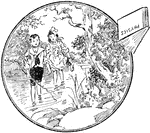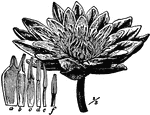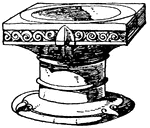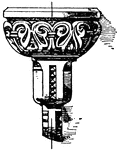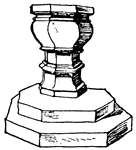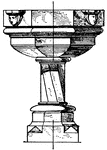
Duckweed
An illustration of duckweed. Duckweed is an important food source for waterfowl and are eaten by humans…

Fair
A very lively group of people at the fair. A marching band plays, children ride the merry-go-round,…
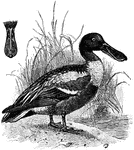
Northern Shoveler
The Northern Shoveler (Anas clypeata) is a common duck in the Anatidae family of water birds.
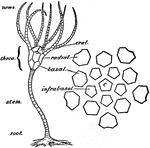
Simple Crinoid
An illustration of a simple five armed crinoid with a detailed view of the tegmen of five orals. Crinoids,…
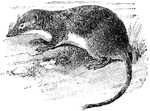
American Water Shrew
The American Water Shrew (Sorex palustris) is a small mammal in the Soricidae family of shrews that…

Sedum
Sedum is the large stonecrop genus of the Crassulaceae, representing about 400 species of leaf succulents,…

Crayfish
Crayfish, crawfish, or crawdads are freshwater crustaceans resembling small lobsters, to which they…

Hawser Rudder
"Hawser-rudder. a, hawser; bb, hauling-lines, leading through chocks on each quarter." -Whitney, 1911
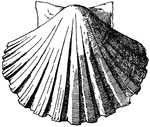
Exterior Scallop Shell
The Exterior Scallop Shell was used as a water basin in the form of a shallow dish and as a decorative…
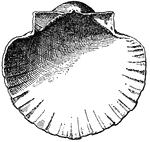
Interior Scallop Shell
The Interior Scallop Shell was used as a water basin in the form of a shallow dish and as a decorative…

Greek Hydria Link Border
The Greek hydria link border is a design found on the outside of a Greek pottery used for carrying water.…

Holy Water-Stoup Candelabrum-like Shaft
The Holy water-stoup candelabrum-like shaft is an Italian Renaissance design that is found in the Pisa…
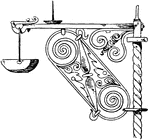
Wrought-Iron Bracket
This wrought-iron bracket is a German Renaissance style. It is a bearer of a water-stoup, found on a…

Cyperus
An illustration of the partial inflorescence of a cyperus plant, spikelet of the same (left), and the…
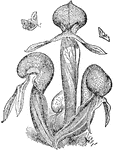
Darlingtonia Californica
Darlingtonia californica also called the California Pitcher plant, Cobra Lily, or Cobra Plant, is a…

Pottery Model of the Water Organ
A pottery model of the water organ. The water organ or hydraulic organ (early types are sometimes called…

Pottery Model of the Water Organ
A pottery model of the water organ. The water organ or hydraulic organ (early types are sometimes called…

Water Organ
The water organ or hydraulic organ (early types are sometimes called hydraulis, hydraulos, hydraulus…
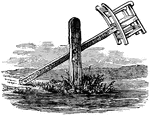
Ducking Stool
Used as a form of humiliating punishment for angry women, a ducking stool was "a stool or chair in which…

Wels Catfish
The wels catfish is a scaleless fresh and brackish water catfish recognizable by its broad, flat head…
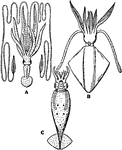
Cephalopod
The cephalopods are the mollusk class Cephalopoda characterized by bilateral body symmetry, a prominent…
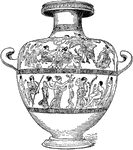
Hydria
A hydria is a type of Greek pottery used for carrying water. The hydria has three handles. Two horizontal…
Roman Aqueduct
"Part of a Roman Aqueduct. Aqueducts form one of the most characteristic features of Roman architecture.…
Common Hydrometer
A hydrometer is an instrument used to measure the specific gravity (or relative density) of liquids;…
!["Suppose we have a pipe A B laid in a horizontal position so that the centre line is exactly at the same level all along the pope, and differences of level may be neglected. Let water be delivered b this pipe at a steady from a reservoir provided with a constant supply which keeps the free surface level always the same. If the pipe A B is of uniform sectional area throughout, and is at all points offers a uniform frictional resistance to the flow of the water, the pressure will gradually become less at points along it more and more distanct from the reservoir. This is no lonfer the case when the pipe is larger at one place than another, as shown in the [figure]." (Britannica, 1891)](https://etc.usf.edu/clipart/61100/61153/61153_water-flow_mth.gif)
Water Flow in Pipes
"Suppose we have a pipe A B laid in a horizontal position so that the centre line is exactly at the…
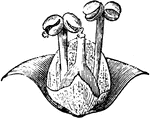
Lemnaoideae
Lemnaceae is a family of flowering plants, also known as the duckweed family, as it contains the duckweeds…

Simple Dam
An illustration of a simple dam; a dam is a barrier that impounds water or underground streams. Dams…

Egyptian Amphora Shape
This Egyptian amphora is a vase with a cover intended for water, oil or wine. It was found in Thebes,…

Egyptian Amphora
This Egyptian amphora is a vase with a cover intended for water, oil or wine. It was found in Thebes,…

Egyptian Krater
The Egyptian Krater is an antique vase that has a lotus cup design. Typically used for mixing water…

Egyptian Krater from Thebes
This Egyptian Krater is an antique vase that was found in Thebes, Ancient Egypt during the eighteenth…
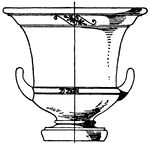
Greek Krater
This Greek krater is a type of antique vase that was typically used for mixing water and wine.
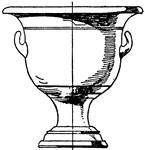
Greek Krater
This Greek krater is a type of antique vase that was typically used for mixing water and wine.
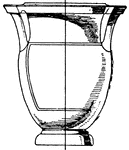
Greek Krater
This Greek krater has columnar handles. Its a type of antique vase that was typically used for mixing…
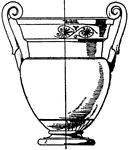
Greek Krater
This Greek Krater has volute handles that spiral upwards. Its a type of antique vase that was typically…

Antique Krater
This antique krater is an antique vase that was typically used for mixing water and wine.
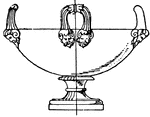
Antique Krater
This Antique krater is found in Tivoli, England. Typically used for mixing water and wine.

Modern Flower-Vase
This modern flower-vase is a hyacinth glass which is intended for forcing bulbs into water.
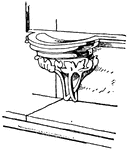
12th Century Stoup
This 12th century stoup is used to hold holy water. It is found in Roman Catholic churches.

16th Century Stoup
This 16th century stoup is used to hold holy water. It is found in Roman Catholic churches.
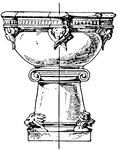
17th Century Stoup
This 17th century stoup is used to hold holy water. It is found in Roman Catholic churches.

16th Century Stoup
This 16th century stoup is found in a chapel of a castle in Mello, France. It is used to store holy…

17th Century Stoup
This 17th century stoup is made out of silver. It is used to store holy water found in Roman Catholic…
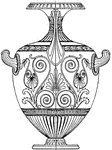
Greek Hydria
The Greek Hydria is used as a water-pot to carry water with from springs. Maidens carried it on their…

Greek Hydria
This Greek Hydria has a Kalpis form that is smooth and painted in black and red figures on the shoulder.…

Greek Hydria
This Greek Hydria is painted in black, reddish brown and white. Decorated of the highest class, the…
Egyptian Bucket from Thebes
This Egyptian bucket was found in Thebes, Ancient Egypt during the reign of Tutmose III. An Egyptian…

Egyptian Bronze Bucket
This Egyptian bucket is made out of bronze. An Egyptian origin it was used to draw water from the Nile.…
Egyptian Bucket
This Egyptian bucket is made out of bronze. An Egyptian origin it was used to draw water from the Nile.…

Egyptian Bucket with Handle
This Egyptian bucket is made out of bronze. An Egyptian origin it was used to draw water from the Nile.…
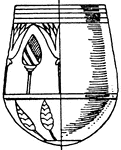
Egyptian Vessel
This Egyptian vessel is bucket-like without a handle. It was used to transport water from the Nile.
